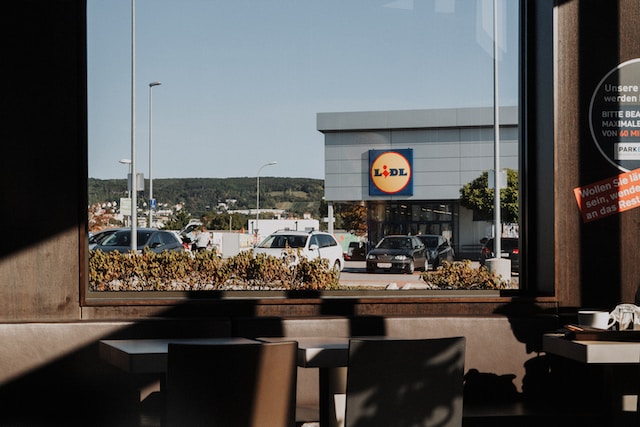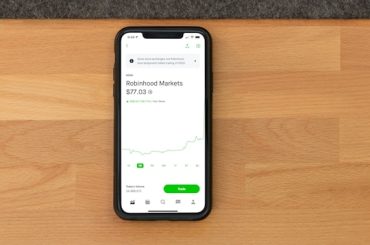Before we dive deep into the SWOT analysis, let us get the business overview of Lidl. Lidl Stiftung & Co. KG, commonly known as Lidl, is a German-based discount supermarket chain that operates internationally.
Lidl was founded in 1930 by Josef Schwarz as a grocery wholesaler and transformed into a discount supermarket by his son, Dieter Schwarz, in the 1970s. The company is headquartered in Neckarsulm, Baden-Württemberg, Germany.
Lidl is part of the Schwarz Group, one of the world’s largest retail groups, which also owns Kaufland, a hypermarket chain. Lidl has over 11,000 stores in more than 30 countries across Europe and the United States. The company is well-known for its low prices, efficient operations, and “no-frills” approach to retailing.
Lidl’s business model revolves around providing a limited assortment of private-label products at low prices, focusing on essentials such as groceries, household items, and clothing. The company is able to keep prices low by maintaining a lean supply chain, reducing store overhead, and using a cost-effective store layout.
Lidl stores are typically smaller than traditional supermarkets, averaging around 10,000 to 15,000 square feet. This smaller footprint allows for cost savings, lower rent, and easier store management. The stores are designed to be efficient, with a simple layout, wide aisles, and a limited product range. Lidl also reduces labor costs by employing fewer staff than traditional supermarkets and streamlining store operations.
In recent years, Lidl has expanded its product offerings to include more fresh produce, organic products, and a comprehensive range of non-food items. The company has also made efforts to improve its sustainability practices and reduce its environmental impact. Lidl is working on reducing its carbon footprint, minimizing food waste, and implementing more responsible sourcing policies.
Financial Performance: According to the parent company Schwarz Gruppe, Lidl has increased its sales by 4.7 % to 100.8 billion euros in the 2021-2022 financial year.
Here is a SWOT analysis for Lidl:
A SWOT analysis is a strategic planning tool used to evaluate the Strengths, Weaknesses, Opportunities, and Threats of a business, project, or individual. It involves identifying the internal and external factors that can affect a venture’s success or failure and analyzing them to develop a strategic plan. In this article, we do a SWOT Analysis of Lidl.
By the way, here is a course that will help you stand out in the world of strategy. The Strategic Thinking program for CxO by Cambridge Judge Business School maps your competitive advantage and teaches advanced techniques to formulate, evaluate, and execute winning strategies. Generate winning strategies and learn how to renew them in times of crisis for a competitive advantage.
SWOT Analysis: Meaning, Importance, and Examples
Strengths
- Low prices: Lidl’s focus on offering low prices to consumers is a major strength, as it attracts price-conscious customers and helps the company remain competitive. Its efficient supply chain, lean store operations, and private-label strategy allow Lidl to maintain low prices without compromising quality.
- Efficient operations: Lidl’s business model emphasizes efficiency in all aspects, from store layout and product assortment to supply chain management. This allows the company to reduce costs, streamline processes, and maintain low consumer prices.
- Private-label products: Lidl’s focus on private-label products enables the company to control product quality and pricing, which helps maintain low prices and attract customers. Private-label products also offer higher profit margins than branded products, contributing to Lidl’s overall profitability.
- International presence: With over 12,000 stores and more than 200 goods distribution and logistics centers in more than 31countries, Lidl has a strong international presence, diversifying its revenue streams and reducing reliance on any single market. This global reach also enables the company to benefit from economies of scale and negotiate better deals with suppliers.
- Simple store layout and design: Lidl’s no-frills store layout and design contribute to a more efficient shopping experience for customers and help reduce costs. Smaller store footprints also mean lower rent and overhead expenses.
- Adaptability: Lidl has demonstrated adaptability in recent years, expanding its product offerings to cater to changing consumer preferences. This includes adding more fresh produce, organic products, and non-food items to its product range, which helps attract a broader customer base.
- Sustainability initiatives: Lidl has made significant efforts to improve its sustainability practices, including reducing its carbon footprint, minimizing food waste, and implementing responsible sourcing policies. These initiatives reduce the company’s environmental impact, appeal to environmentally conscious consumers, and improve Lidl’s brand image.
- Strong brand recognition: Lidl has built a strong brand reputation as a low-cost retailer that offers quality products. This brand recognition helps the company attract and retain customers and differentiates it from competitors in the market.
Weaknesses
- Limited product range: Lidl’s focus on a limited assortment of products means customers might not find everything they need in one store, potentially causing them to shop elsewhere for additional items. This limitation might deter some customers who prefer a more comprehensive shopping experience.
- Perception of lower quality: The focus on low prices and private-label products may lead some customers to perceive Lidl’s offerings as lower quality compared to branded products found at traditional supermarkets. This perception may discourage some shoppers from choosing Lidl over its competitors.
- Dependence on private-label products: Lidl’s reliance on private-label products could make it more vulnerable to supplier cost fluctuations or supply chain disruptions. Additionally, the company may face challenges in responding to customer preferences for branded products in certain categories.
- Employee satisfaction and turnover: Lidl’s cost-cutting measures and focus on efficiency may lead to lower employee satisfaction and higher turnover rates, as staff may face increased workloads, limited growth opportunities, and lower wages than competitors.
- Limited online presence: As of 2021, Lidl had a limited online presence and e-commerce platform compared to many of its competitors. This weakness could hinder the company’s ability to capitalize on the growing trend of online shopping and compete with rivals that have more robust e-commerce offerings.
- Competition and market saturation: The discount retail market is highly competitive, with numerous players like Aldi, Tesco, and Carrefour vying for market share. Lidl may struggle to differentiate itself in saturated markets, which could limit growth opportunities.
- Resistance to expansion in some regions: In some regions, particularly in the United States, Lidl has faced challenges in its expansion efforts due to intense competition, existing market players, and cultural differences in shopping habits. These factors may hinder Lidl’s growth in certain markets.
- Potential negative impact of cost-cutting: While Lidl’s cost-cutting measures contribute to its low prices, there is a risk that excessive cost-cutting could lead to compromises in product quality or customer service, which could harm the company’s reputation and customer loyalty in the long run.
By the way, to communicate our strategy effectively within the team, we all need a robust collaboration platform. Miro is the leading visual collaboration platform. Build anything together on Miro. It’s free and as easy to use as a whiteboard, but endlessly more powerful. Do use the Miro platform for strong communication within your team.
Opportunities
- E-commerce expansion: Developing a stronger online presence and e-commerce platform can enable Lidl to capitalize on the growing trend of online shopping and reach a broader customer base. Lidl can improve its competitiveness against rivals with robust e-commerce offerings by investing in its digital infrastructure.
- Expansion in emerging markets: Lidl can explore expansion opportunities in emerging markets, where there is potential for significant growth in the discount retail sector. These markets often have a growing middle class and increasing demand for affordable, high-quality products.
- Product diversification: Lidl can continue to expand and diversify its product offerings to cater to changing consumer preferences. This includes adding more organic, vegetarian, and vegan products and increasing its range of non-food items. By doing so, Lidl can attract a broader customer base and increase its market share.
- Strengthening sustainability initiatives: Lidl can further reinforce its sustainability practices and initiatives in its operations and supply chain. By doing so, the company can appeal to environmentally conscious consumers and improve its brand image.
- Collaboration with local suppliers: By collaborating with local suppliers and manufacturers, Lidl can support local economies, reduce transportation costs, and lower its carbon footprint. This strategy can also help Lidl adapt its product offerings to cater to regional tastes and preferences.
- Enhancing customer experience: Investing in technology and store design to enhance the in-store customer experience can help Lidl differentiate itself from competitors and foster customer loyalty. This might include incorporating digital solutions, such as self-checkout systems, mobile apps, and in-store digital displays.
- Improving employee satisfaction: By investing in employee training, development, and benefits, Lidl can improve employee satisfaction and reduce turnover rates. A more satisfied and engaged workforce can lead to better customer service, enhanced store operations, and a stronger brand image.
- Store format innovation: Lidl can experiment with new store formats, such as smaller urban stores, to reach a broader range of customers and adapt to different market conditions. This flexibility can help the company cater to varied consumer preferences and shopping habits.
Threats
- Intense competition: The discount retail sector is highly competitive, with numerous players like Aldi, Tesco, and Carrefour vying for market share. Increased competition can lead to price wars, which may pressure Lidl’s margins and profitability.
- Consumer preferences: Changing consumer preferences and shopping habits can impact Lidl’s market position. For instance, the growing demand for online shopping, preference for branded products, or increasing interest in specialty or niche retailers may pose challenges for Lidl’s business model.
- Economic fluctuations: Economic downturns and fluctuations can affect consumer spending and product demand. In periods of economic uncertainty, consumers may reduce spending on non-essential items, which could negatively impact Lidl’s sales and profitability.
- Supply chain disruptions: Lidl’s reliance on an efficient supply chain for its private-label products makes it vulnerable to disturbances, such as natural disasters, geopolitical tensions, or trade restrictions. Such disruptions can lead to increased costs, product shortages, and potential damage to Lidl’s reputation.
- Regulatory changes: Changes in regulations, such as taxes, import/export restrictions, or food safety standards, can impact Lidl’s operations and profitability. Lidl must continuously monitor and adapt to regulatory changes in its various markets to mitigate potential negative impacts.
- Currency fluctuations: As an international company, Lidl is exposed to currency fluctuations, which can affect its financial performance. Changes in exchange rates can impact the cost of goods, pricing strategies, and overall profitability.
- Technological advancements: Rapid technological advancements and the emergence of new retail technologies may disrupt Lidl’s business model. The company must continuously invest in innovation and technology to stay competitive and adapt to changing consumer expectations.
- Environmental concerns: Growing awareness of environmental issues like climate change and plastic waste may increase consumer demand for sustainable products and practices. Lidl may face challenges adapting its operations and supply chain to meet these demands and maintain a positive brand image.
- Labor regulations and employee relations: Changes in labor laws, minimum wage regulations, or employee relations can impact Lidl’s labor costs and overall profitability. The company must ensure compliance with regulations and maintain good relations with its workforce to mitigate potential negative impacts.









